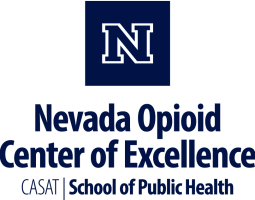This one-hour workshop will provide an overview of new and emerging synthetic cannabinoids and their impacts. The session will incorporate identifying different types of cannabinoids, indicators of use, and trends within Nevada and across the country. Participants will learn practical strategies and resources for managing unknown and novel synthetic substance use while understanding up-to-date information that will equip providers to implement effective approaches to engagement and care.
Learning Objectives:
- Understand synthetic cannabinoids, including their origination, trends in use, and how K2 and spice have been used.
- Be able to describe positive and negative effects of K2 and spice, including potential for overdose, and why the drugs are used.
- Recognize the behavioral and physical signs of K2 and spice use and identify tools to use in screening.
Presented by: Andrew Kurtz, MA, LMFT
Andrew Kurtz, LMFT provides training and consultation in mental health and substance use disorders to local and international healthcare organizations. Mr. Kurtz has been a trainer and educator with UCLA Health since 2014. Mr. Kurtz has been a program director in community mental health specializing in optimizing access to integrated services through a same-day assessment center. He has served as the lead of a nationally-recognized Trauma-Informed Care implementation that provided trainings and program design assistance, including developing a one-of-a-kind wellness center focused on reducing barriers to accessing care for individuals exposed to traumatic events. Mr. Kurtz has been the instructor for the Fieldwork Practicum course in UCLA Extension’s Alcohol and Drug Counseling Certificate Program since 2017 and has published research on cognitive and behavioral interventions for the treatment of first-episode schizophrenia. Mr. Kurtz is currently the Learning and Development Supervisor in UCLA Health’s Learning and Organizational Development Department and an MBA candidate, completing coursework at UCLA Anderson’s School of Management.
Funding for this activity was made possible in whole or in part by the Nevada Department of Health and Human Services (DHHS) Director’s Office through the Fund for a Resilient Nevada, established in Nevada Revised Statutes 433.712 through 433.744. The opinions, findings, conclusions, and recommendations expressed in our courses are those of the author(s) and do not necessarily represent the official views of the Nevada Opioid Center of Excellence or its funders.
